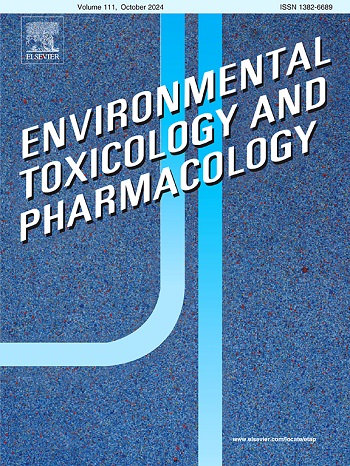Polystyrene microplastics reduce honeybee survival by disrupting gut microbiota and metabolism
IF 4.2
3区 环境科学与生态学
Q2 ENVIRONMENTAL SCIENCES
引用次数: 0
Abstract
Polystyrene microplastics (PS-MPs) pose significant risks to honeybee health. However, how microplastics (MPs) adversely influence honeybee survival through the gut pathway, especially the metabolic processes, remains poorly understood. To conduct the experiment, the honeybees (Apis mellifera L.) were exposed to PS-MPs (0.5 μm and 5 μm) at environmental concentrations of 25 mg/L and 50 mg/L for 21 days. Results revealed that PS-MPs reduced honeybee survival rates and food consumption. The accumulation of PS-MPs in honeybee guts caused structural damage to gut walls and elevated oxidative stress levels. Additionally, PS-MPs altered gut microbial communities, with a decrease in Lactobacillus and an increase in Bartonella. Gut metabolomics analysis indicated that PS-MPs disrupted metabolic pathways, upregulated amino acid and carbohydrate metabolism, and downregulated alpha-linolenic acid and lipid metabolism. Our study offers important insights into the physiological effects of accumulated MPs on honeybees, highlighting the critical need for effective strategies to manage environmental pollutants.
聚苯乙烯微塑料通过扰乱肠道微生物群和新陈代谢降低蜜蜂存活率
聚苯乙烯微塑料(PS-MPs)对蜜蜂健康构成重大风险。然而,微塑料(MPs)如何通过肠道途径,特别是代谢过程对蜜蜂的生存产生不利影响,人们仍然知之甚少。实验采用环境浓度分别为25 mg/L和50 mg/L的PS-MPs (0.5 μm和5 μm)处理蜜蜂21 d。结果显示,PS-MPs降低了蜜蜂的存活率和食物消耗。PS-MPs在蜜蜂肠道中的积累导致肠壁结构损伤和氧化应激水平升高。此外,PS-MPs改变了肠道微生物群落,乳酸杆菌减少,巴尔通体增加。肠道代谢组学分析表明,PS-MPs破坏代谢途径,上调氨基酸和碳水化合物代谢,下调α -亚麻酸和脂质代谢。我们的研究为积累的MPs对蜜蜂的生理影响提供了重要的见解,强调了对管理环境污染物的有效策略的迫切需要。
本文章由计算机程序翻译,如有差异,请以英文原文为准。
求助全文
约1分钟内获得全文
求助全文
来源期刊
CiteScore
7.00
自引率
4.70%
发文量
185
审稿时长
34 days
期刊介绍:
Environmental Toxicology and Pharmacology publishes the results of studies concerning toxic and pharmacological effects of (human and veterinary) drugs and of environmental contaminants in animals and man.
Areas of special interest are: molecular mechanisms of toxicity, biotransformation and toxicokinetics (including toxicokinetic modelling), molecular, biochemical and physiological mechanisms explaining differences in sensitivity between species and individuals, the characterisation of pathophysiological models and mechanisms involved in the development of effects and the identification of biological markers that can be used to study exposure and effects in man and animals.
In addition to full length papers, short communications, full-length reviews and mini-reviews, Environmental Toxicology and Pharmacology will publish in depth assessments of special problem areas. The latter publications may exceed the length of a full length paper three to fourfold. A basic requirement is that the assessments are made under the auspices of international groups of leading experts in the fields concerned. The information examined may either consist of data that were already published, or of new data that were obtained within the framework of collaborative research programmes. Provision is also made for the acceptance of minireviews on (classes of) compounds, toxicities or mechanisms, debating recent advances in rapidly developing fields that fall within the scope of the journal.

 求助内容:
求助内容: 应助结果提醒方式:
应助结果提醒方式:


